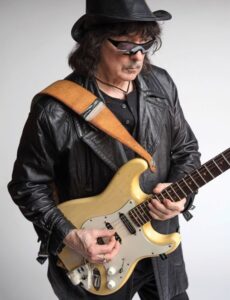 English-born guitar icon Ritchie Blackmore is one of the most influential guitar players from the 70s and is often referred to as one of the fathers of heavy metal. His unique playing style, blues-driven riffs using 4ths, classical music influence, arpeggios, and fast picking are the reason he stood out above many other contemporaries.
English-born guitar icon Ritchie Blackmore is one of the most influential guitar players from the 70s and is often referred to as one of the fathers of heavy metal. His unique playing style, blues-driven riffs using 4ths, classical music influence, arpeggios, and fast picking are the reason he stood out above many other contemporaries.
In the 1960s he began his career as a session guitarist, recording and touring with many bands. However, he is most famous for being one of the founding members of Deep Purple, one of the most prominent classic rock acts ever. During the mid-70s Blackmore left Deep Purple and formed another classic hard rock giant Rainbow, after the famous “Rainbow Bar and Grill” in LA.
Later on, 1997 saw Ritchie along with his girlfriend, Candice Night, forming the medieval folk-inspired band Blackmore’s Night, who are still active, recording and performing live. But it’s worth noting that former Deep Purple “highway star” has left an undeniable mark on rock music as we know it, beyond classical blues-founded riffing, Blackmore innovated the guitar in a way the world was perhaps unprepared for back in the 70s.
It’s easy to assume that as time went by, many guitar players from all around the world have tried to copy and replicate Ritchie’s sound, so let’s have a look at the guitars and gear he used to conjure that Deep Purple tone we all know and love.
1974 Fender Stratocaster

Ritchie Blackmore plays Fender Stratocaster guitars, which have been his guitar of choice since the 1970s. He has a few signature and custom models to his name with Fender and, while remaining mostly devoted to playing Strats, he’s also owned and played a few other models throughout his career.
Blackmore started using this Stratocaster back in 1975 when Rainbow was just entering the recording sessions of their 1976 studio installment “Rising”. It was the first guitar of his to feature a scalloped fretboard modified by himself and ever since then he’s made sure all his fretboards are the same with his preferred concave shape.
Ritchie was last seen with that guitar in 1977 before it resurfaced again in 1979, but with completely different electronics and with a striking look. It was Ritchie’s guitar tech who introduced him to a new pickup – Schecter’s F500T. This Strat setup had two single-coil pickups and a dummy coil at the middle position. All three pickup covers, as well as the knobs, switch, and tremolo-arm tip, were black. This combination of colors – big-headed Olympic white Stratocaster, with a maple neck, scalloped rosewood fretboard, and black hardware was to become Ritchie’s trademark Strat look. Since then he used that guitar with Rainbow and later with Blackmore’s Night.

This guitar immediately became Blackmore’s definitive number one, and it eventually earned a signature model released by Fender which was modeled after it. Ritchie’s unique Stratocaster can be heard in essentially every record his made since 1976. It wasn’t until the mid-90s when a luthier accidentally tried to fix the fretboard, forcing Blackmore to re-scallop it and thus making the neck and board even thinner. He’s stated in various interviews that its use is now limited to the studio only, nevertheless, that didn’t stop him from making various stock models after it, and eventually, Fender’s signature line would also come in handy for the guitarist issuing him #1 and #2.
1968 Fender Ritchie Blackmore Tribute Stratocaster
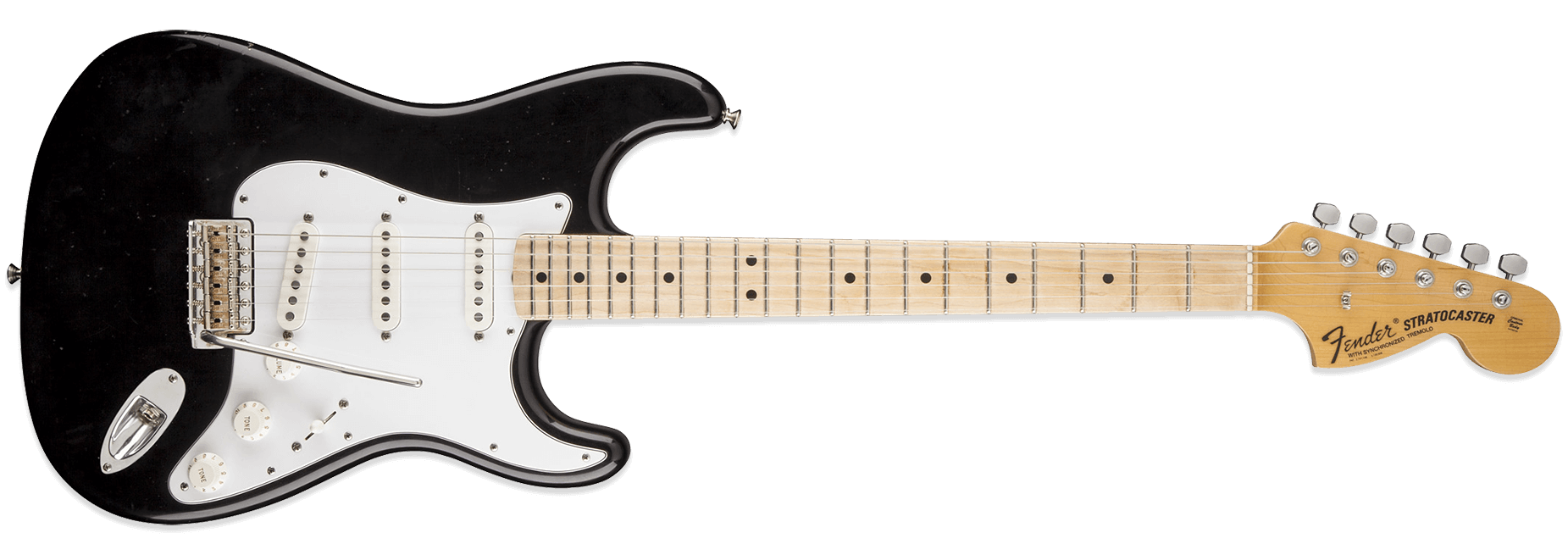
The first Strat Blackmore used was a second-hand Fender Stratocaster with a Telecaster neck, which he bought from an Eric Clapton roadie for $60. Shortly after he acquired it, Blackmore decided the guitar was unplayable, due to problems with intonation.
But Ritchie was somehow drawn into the Strat and didn’t hesitate to look for another, he would soon acquire this 1968 maple-necked model, one that would accompany him through some of the most iconic moments of his career. For one, this is the guitar that Blackmore used when writing, recording, and performing the one true guitar riff for “Smoke on the Water”. What’s more, he even played this exact guitar during the infamous Montreux Casino fire incident that inspired the song back in 1971.
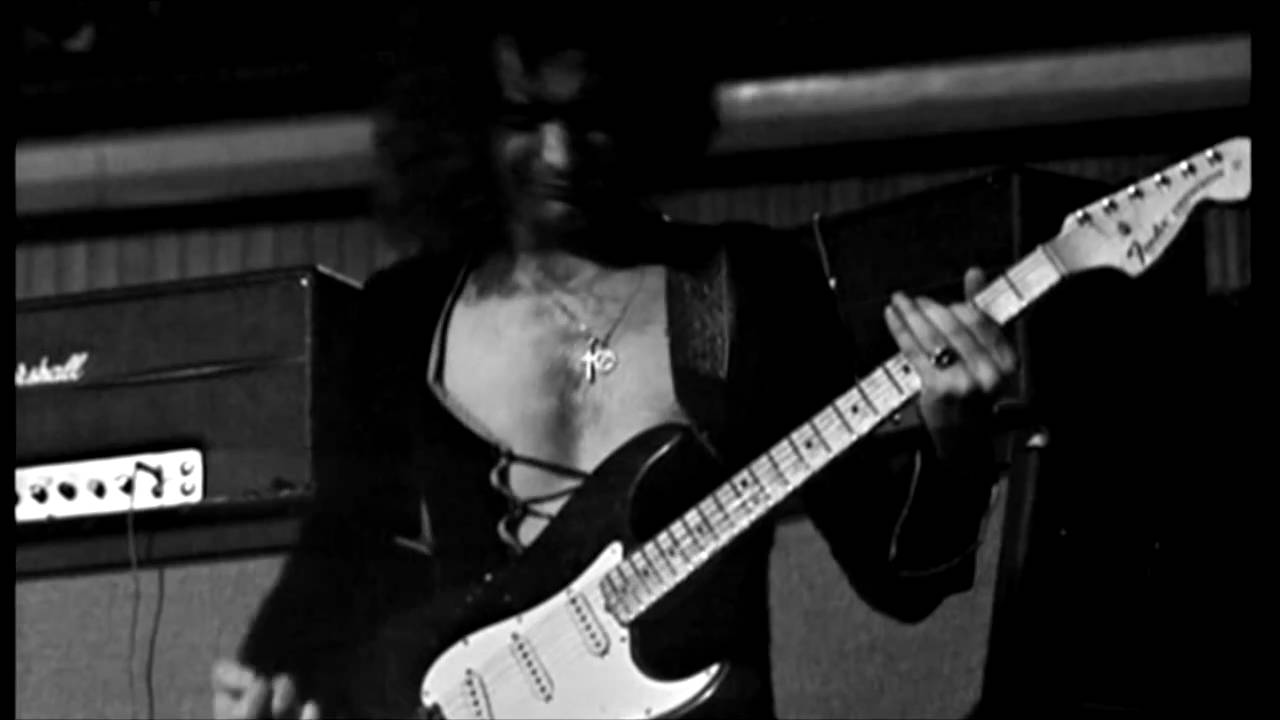
The guitar had a black urethane finish, a 2-piece alder body, a bolt-on maple U-shaped neck, and a maple fretboard. It is equipped with 3 Custom ’68 Strat hand-wound single-coil pickups and Schaller tuners. Another feature typical for Ritchie’s Signature Strats, including this one, is that they have a three-way pickup switch. This Strat also has a four-bolt neck plate a vintage-style tremolo.
After many years with this pre-CBS era Stratocaster, Ritchie eventually retired it and kept it for special use only. He has stated that the reason for using that guitar for studio solos is that the pickups have a lot of distortion. Right down to the bone, these are the features that Fender decided to replicate when releasing the custom shop Ritchie Blackmore Fender Stratocaster in more recent years.


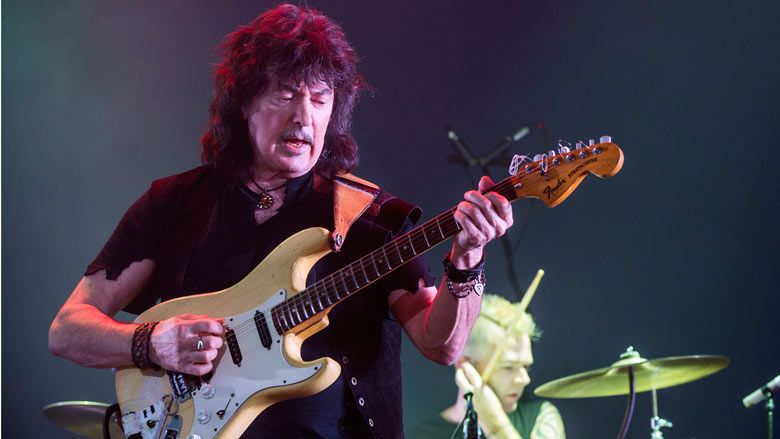
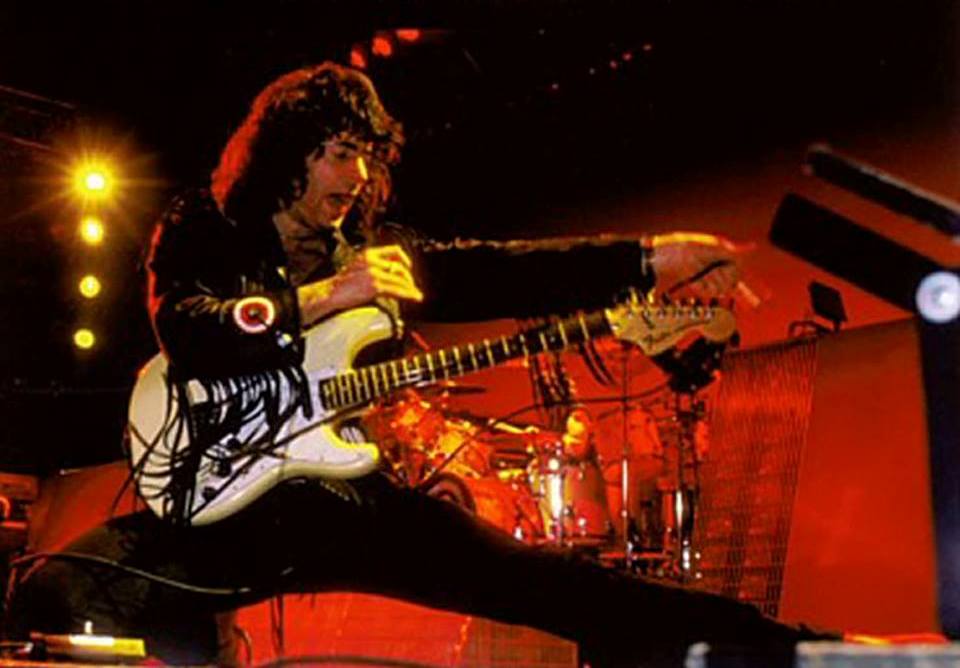
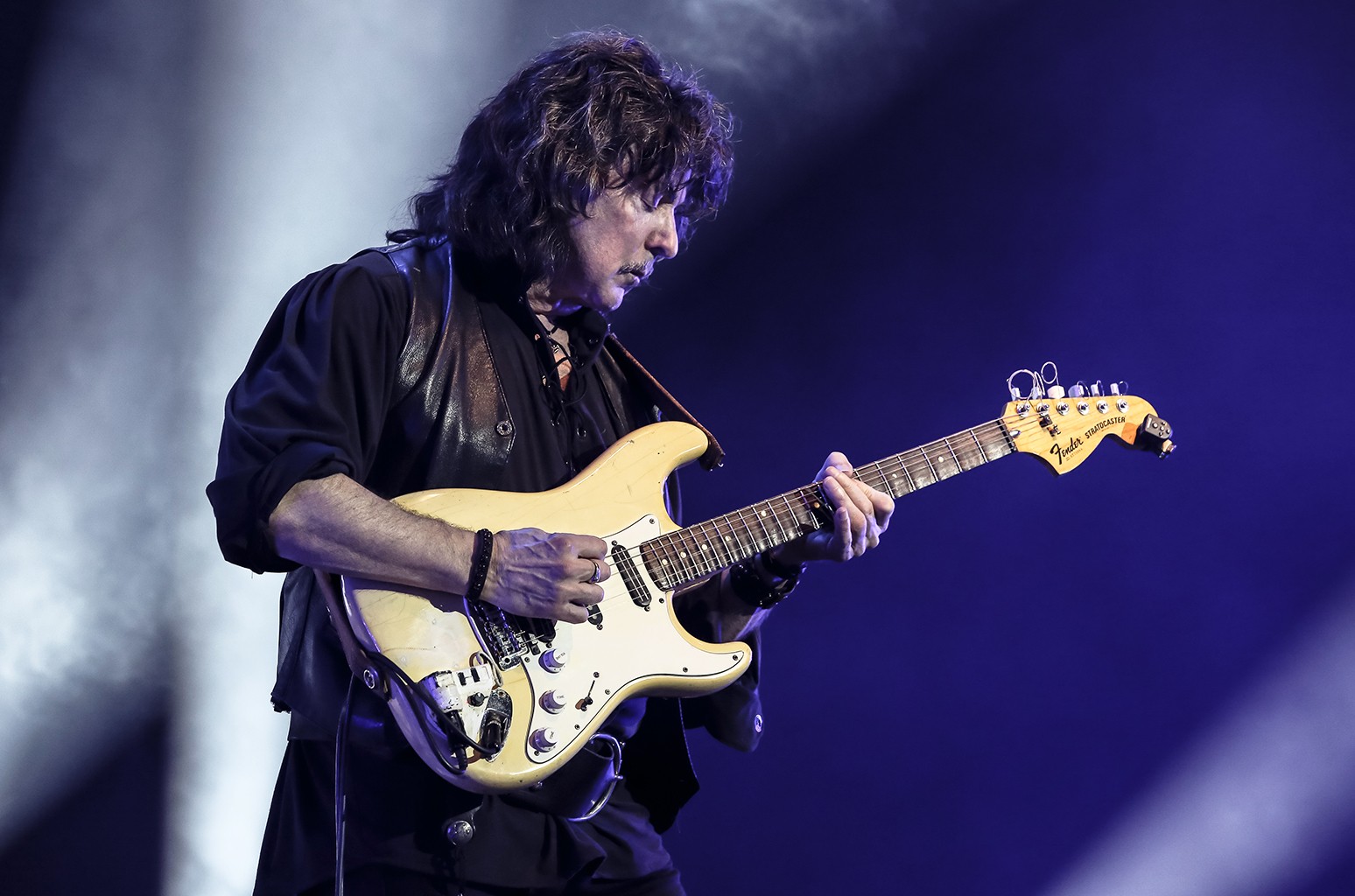
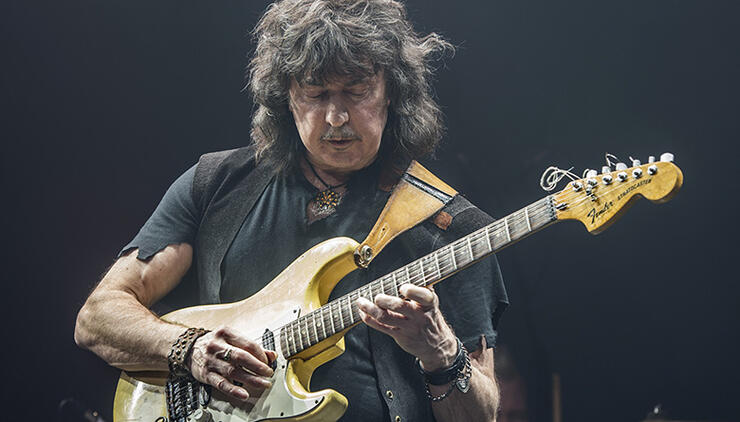
Stay connected